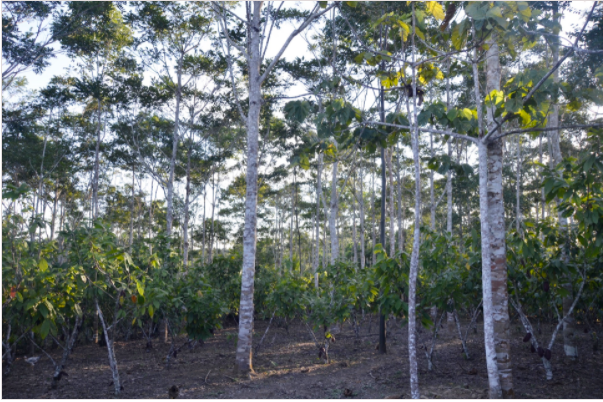
Trees on farms for biodiversity in Peru
Evidence of trees’ contribution to enhancing biodiversity in agricultural landscapes has been presented to decision-makers in Peru.
Incorporating trees into farms can enhance biodiversity and strengthen the sustainability of agriculture: a message increasingly shared among government ministries in Peru. The country is a signatory to the Convention on Biological Diversity and the United Nations Framework Convention on Climate Change and must report on progress in meeting targets for both.
Peru’s Biodiversity Strategic Plan, a requirement under the Convention on Biological Diversity, includes efforts to achieve Aichi Target 7: ‘By 2020, areas under agriculture, aquaculture and forestry will be sustainably managed, ensuring the conservation of biological diversity’.
However, the Plan pays no attention to trees in the agricultural matrix nor their contribution to biodiversity. Moreover, non-forest trees in these productive areas are ‘invisible’, that is, they are not counted in important national assessments, such as the National Forest Inventory and the National Greenhouse Gas Inventory.
To help change this picture, the Harnessing the Potential of Trees on Farms for Meeting National and Global Biodiversity Targets (Trees on Farms for Biodiversity) project, implemented in Peru by World Agroforestry (ICRAF), organized in October 2020 in collaboration with the Ministry of Environment a digital event to present evidence on the role that trees associated with crops play in biodiversity conservation in Indonesia, Honduras, Uganda and Rwanda.
The event brought together more than 50 decision-makers and technicians from ministries and other Peruvian government agencies, as well as representatives of civil society organizations working in agriculture and forestry.
‘The message about trees on farms’ contribution to biodiversity reached the participants and interested them to the point that they stayed tuned in throughout the event and came with requests for further discussion,’ said Anja Gassner, global coordinator of the project. ‘This is a real success. It created a lot of interest among our Peruvian partners.’
The event: a tool and evidence
A tool was presented at the event that was developed by the project to assess the contribution of trees, birds and other species to overall biodiversity in an agricultural landscape. It is a protocol for collecting information and proposes indicators to quantify the contribution of different components to the biodiversity of agricultural land and agricultural use at different scales (plot, farm, landscape). The tool was released with the aim of demonstrating its feasibility and to promote a process in which Peruvian government actors can assess the opportunities for integrating it into officially recognized and applied instruments.
‘A group could be set up which could be a practical ally in the exercise of adopting and applying the tool,’ noted Roxana Solis, biodiversity management specialist at the Ministry of Environment, ‘as we have to comply with what it means to integrate biodiversity in the productive sectors, in our plans, strategies and policies. This would help us a lot to be able to respond as a country to the Convention on Biological Diversity.’
To demonstrate the use of the tool, the results from Uganda, Rwanda, Indonesia and Honduras were presented. Sam Harrison from the University of Edinburgh shared the findings of a study on the use of remote sensing to map tree biodiversity on farmland in Uganda, Rwanda and Honduras. Rhett Harrison of ICRAF discussed the use of hierarchical community models for data analysis. Yves Laumonier of the Centre for International Forestry Research shared research conducted in Indonesia on the challenges and prospects for trees on farms for biodiversity conservation. Phillip Kijumuro of ICRAF Uganda presented a study on the contribution of trees on farms to bird diversity in a Ugandan landscape. Elisée Bahati Ntawuhiganayo of ICRAF Rwanda shared indicators about a study with birds and arthropods in Rwanda. Eduardo Somarriba from the Tropical Agricultural Research and Higher Education Centre gave a presentation on forests, trees, agriculture and biodiversity in the Catacamas landscape in Honduras.
‘SERFOR as the institution in charge of forest and wildlife resources has to embrace this tool because it is very important for agroforestry systems and farms as a source of income for communities,’ said Max Reynaga, forestry specialist at the National Forestry and Wildlife Service (SERFOR).
‘IIAP loves the initiative,’ added Dennis del Castillo, director of the ProBosques Programme of the Peruvian Amazon Research Institute (IIAP). ‘Trees make the big change.’
Next steps
In the following months, Peruvian groups will be convened for a new digital event in which the progress of the project in all its axes of intervention will be announced. The tool will also be applied in the Amazonian region of Ucayali, an activity that to date has had to be postponed owing to the health emergency caused by COVID-19.
Keywords: biodiversity, trees, agricultural landscapes, Peru, policies
